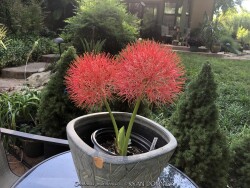
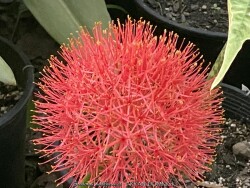
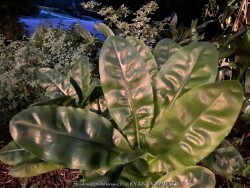
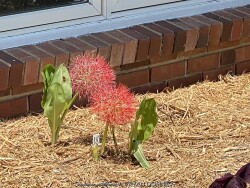



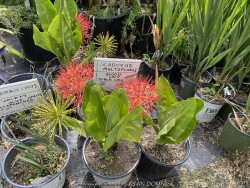
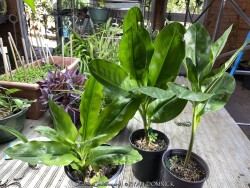

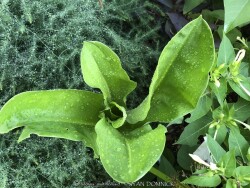
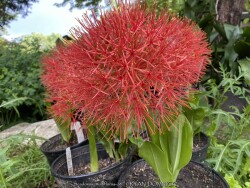
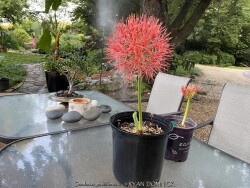
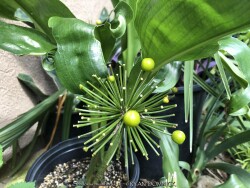
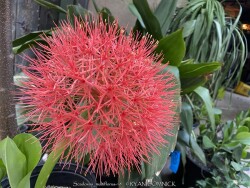
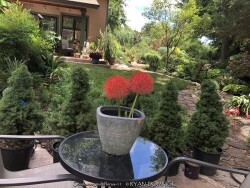
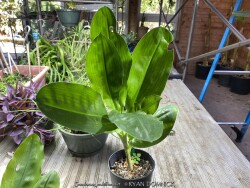
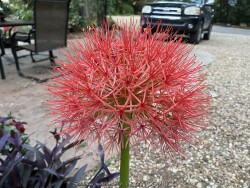

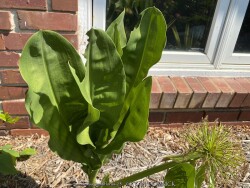

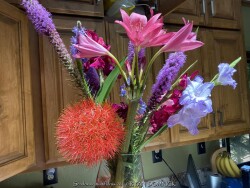
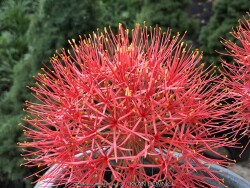
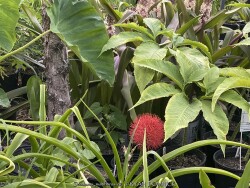
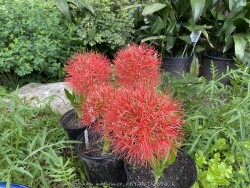
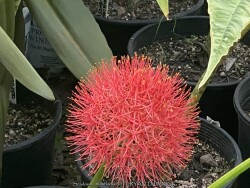

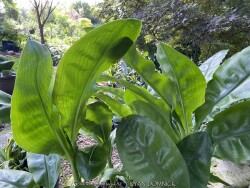
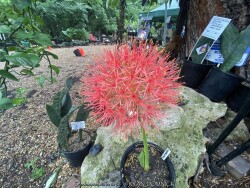
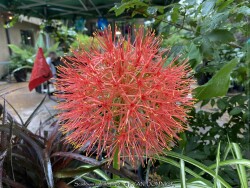

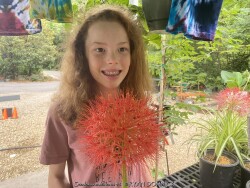
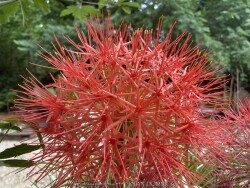
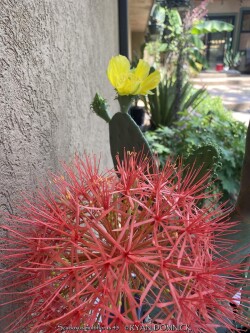
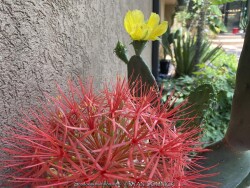
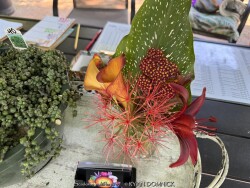
Plant Min Zone: 7a
Plant Max Zone: 11b
Sunlight: Full Sun, Part Sun
Water / Rainfall: Low, Average
Soil Quality: Average, Rich
Bloom Season: Summer
Flower Color: Red
Berry / Fruit Color: Red
Spring Foliage Color: None: Dormant
Summer Foliage Color: Green
Fall Foliage Color: Green
Evergreen Foliage: No
Winter Interest: No
Scented Flowers: No
Drought Tolerance: Medium
Wet-Feet Tolerance: Low
Humidity Tolerance: Low, Medium, High
Wind Tolerance: Medium
Poor Soil Tolerance: No Extreme Soils
Height: 1' - 2'
Width: 1' - 2'
Growth Rate: Medium
Service Life: N.A.
Maintenance Need: N.A.
Spreading Potential: N.A.
Yearly Trimming Tips: N.A.
Plant Grouping Size: N.A.
Best Side of House: N.A.
Extreme Planting Locations: N.A.
Ornamental Features: N.A.
Special Landscape Uses: N.A.
Possible Pest Problems: N.A.
Plant Limitations: N.A.
Shippable in 2026: YES
Jaw-dropping flowers! African Blood Lily (Scadoxus multiflorus) produces a mass of tiny florets with prominent stamens clustered in one large, orange-red, softball-sized, bottlebrush, round flower. It is so eye-catching it wins a place in many summer gardens. Reminds me of a giant red dandelion seed head! This South African native is 8"-10" tall and provides bright color in the late summer garden. Bold, broad green leaves emerge after the flowering is over. Although it is said to need partial shade, we have this pest resistant, adaptable plant happily blooming in full sun; blooms mid-summer. Winter hardiness: zones 7/8-10. Plant bulb outside as an annual before flowering: planting already flowered bulbs is not recommended unless you dig it up for winter storage. If grown as a potted plant, bring container indoors and either grow them as a houseplant in a lighted area. Foliage will look good for a few months before finally dying back. Eventually allow bulb to go dormant stopping the water and store bulbs dry in the container with soil anywhere between 40-70 degrees F. African Blood Lily will bloom year after year when grown as a potted plant; late to emerge in the spring so don't throw it out! It is possible to overwinter these in the ground in Kansas by placing a giant 12" mound of mulch over deeply planted bulbs. New growth will usually be delayed until late May/early June but quickly regains full height. In our trial gardens in Lawrence, KS (zone 6a), a bulb planted over 8" deep and next to a South-facing brick wall with 6-8" of leaf mulch survived -17 degrees F. During the arctic blast of February, 2021, lows down to -17 degrees F on Feb 16th, 2021 were recorded. The longevity of this cold blast was also impressive: 10 days on a row with highs of 10-15 degrees F or lower, 8 nights of lows in the single digits and negatives, and 36 straight hours of 0 degrees F and mostly lower.